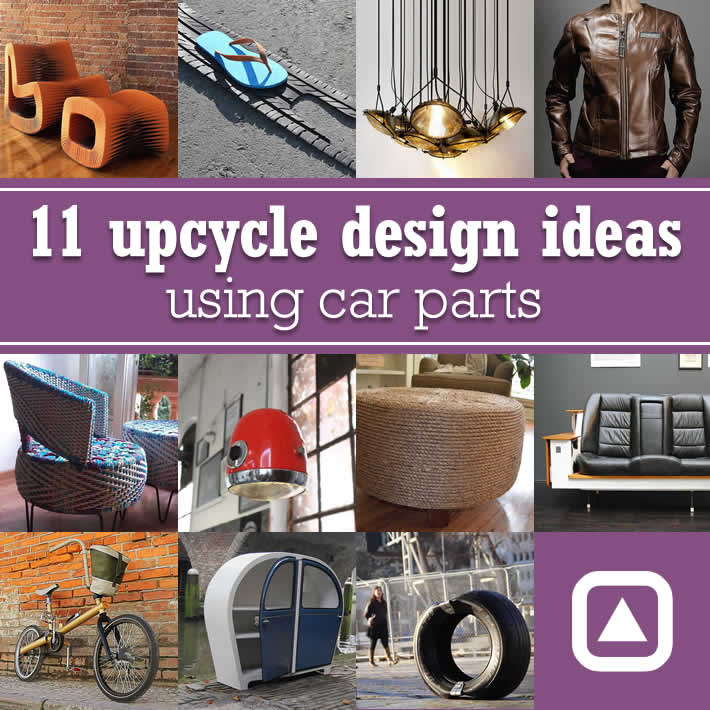
In American manufacturing, operations make margins by making haste. And all along the products’ life cycles—design to production to consumption—that urgency creates costly waste.
It’s no secret that waste is a problem for the United States. Despite accounting for only 4% of the global population, the U.S. accounts for nearly 12% of global waste production and recycles significantly less (about 32%) than any other developed nation.
Part of our shortcomings have stemmed from a myopic view of recycling. While the most common form of recycling sees products broken down and formed into the same or similar products, the practices of “upcycling” and “downcycling” have become creative and sustainable ways to employ valuable materials and preserve natural resources.
From residual food and textile scraps to plastic bags and old cardboard, the second life for many materials is a fork in the road—and, up or down, both lead to an opportunity to drastically reduce waste.
WHAT IS UPCYCLING?
:max_bytes(150000):strip_icc()/what-is-upcycling-5116081_final-a01db8e1a5604b27a3c2b6ea77f8a863.png)
Also known as creative reuse, upcycling refers to the process of transforming by-products, waste, discards, and otherwise useless materials into a product of greater value or quality.
In a sense, you can think of upcycling as getting one last cookie by re-rolling the irregular pieces and edges of dough that escaped the cookie cutter in the first batch.
Upcycling often occurs at the manufacturing level rather than a post-consumer scenario, which allows for material and cost savings on a larger scale. It also presents the ability to carefully select responsible partners and suppliers who will extract the most value and achieve the highest eco-impact.
Most importantly, the by-products, residual, and, in some cases, old or returned products would normally become general waste to a company that doesn’t practice upcycling.
As sustainability and corporate responsibility have driven companies to seek out waste and carbon footprint reduction strategies, organizations across a number of industries have turned to upcycling.
Apparel

Outdoors brand Arc’teryx hosts ReBird, a recommerce program that sells upcycled gear and modular scrap to repair existing gear. New Balance created an “ugly” shoe made entirely from production scrap. And sustainability-minded oat milk company Oatly partnered to create its own line of upcycled gear.
Meanwhile, Nike launched an entire circular enterprise, Nike Grind, collecting materials like rubber, foam, leather, and other textiles from its manufacturing scrap, unused products, and end-of-life footwear. Grind then creates new Nike shoes, builds sports courts and playgrounds for nonprofits, and partners with companies like Lyft and Decoded to make products like e-bike stations and phone cases.
Automotive

A convergence of automotive and textile waste, Hyundai is lending its production scrap to high fashion. Ford is creating “plastic” car components from 3D-printed sawdust. BMW is pioneering design and production circularity with The Green Plant in Germany, automobiles designed to be 85% recyclable or reusable, and a concept car created using secondary materials.
Food & agriculture

Quick-serve restaurant Chipotle uses upcycled avocado pits to dye clothing. An Italian design firm is using the country’s excess of orange peels to 3D-print lamps. A Japanese company is forming premium crayons from 100% food waste. KEEN, a footwear brand, uses agricultural waste, coffee grounds, and upcycled car seat leather to craft its shoes.
WHAT IS DOWNCYCLING?

Also known as cascading, downcycling returns to the process of transforming unused or post-consumer products into goods of lower quality or functionality as the original.
Downcycling is easily identified by quantifying longevity of the materials. While upcycling allows for reclamation or reuse of the same materials for new products, downcycling deals with degraded materials that don’t possess enough structural integrity for circular or upcycled use.
This is not to say that outputs from downcycling aren’t valuable. In many situations, downcycling breathes life into materials that would otherwise become landfilled.
An ongoing argument in the waste and recycling industry, some believe that all plastic recycling is technically downcycling, as post-consumer plastic does not have the same structural integrity as virgin material.
Another downcycling process benefiting infrastructure, Kraft Heinz has piloted a program that creates roofing material from old ketchup bottles.
WASTE REDUCTION THROUGH UPCYCLING AND DOWNCYCLING

While upcycling is generally viewed as the more sustainable route—largely because it extends the material’s life span before degradation occurs—both upcycling and downcycling are proven ways to eliminate solid waste.
However, beginning either process isn’t as easy as picking up scraps off the cutting room floor. Upcycling and downcycling require extensive planning and precise execution in order to achieve both profitability and sustainability. The following considerations must be addressed before upcycling or downcycling can be instituted at scale.
Sources:
- All photos used in this blogpost are sourced from the internet, and the rights belong to their respective owners
- What’s the Difference Between Upcycling and Downcycling? (n.d.). https://www.roadrunnerwm.com/blog/difference-between-upcycling-and-downcycling


